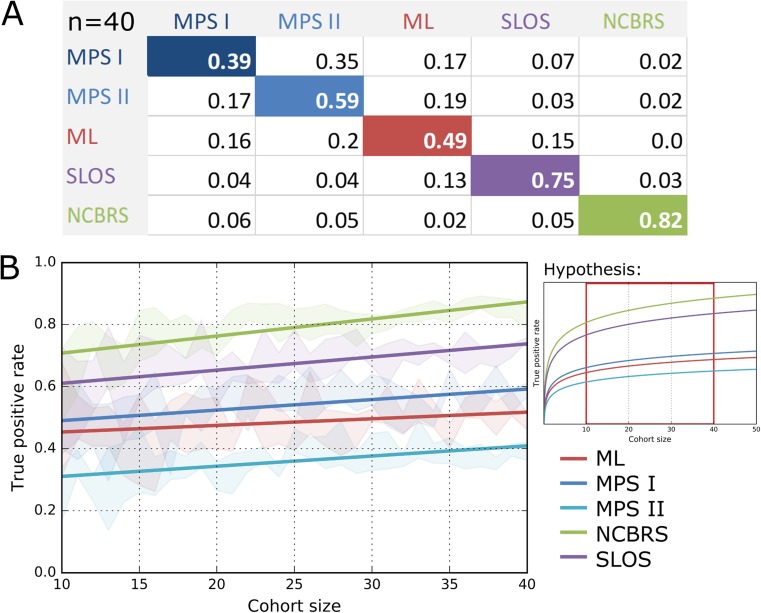Fig. 4.
(a) Confusion matrix with TPRs and FPRs with a cohort size of n = 40. (b) Course of TPRs with increasing cohort size with linear regression. The performance of the classification process was evaluated for equally sized cohorts from n = 10 to n = 40. The true positive rates for the prediction of the disorder improve with increasing cohort size and seem to approach different limits, indicating a difference in relative distinguishability. Especially the prediction of SLOS and NCBRS benefit, when the classifier is trained on more cases. The inference of the correct lipid storage disorder increases less for larger cohort sizes

